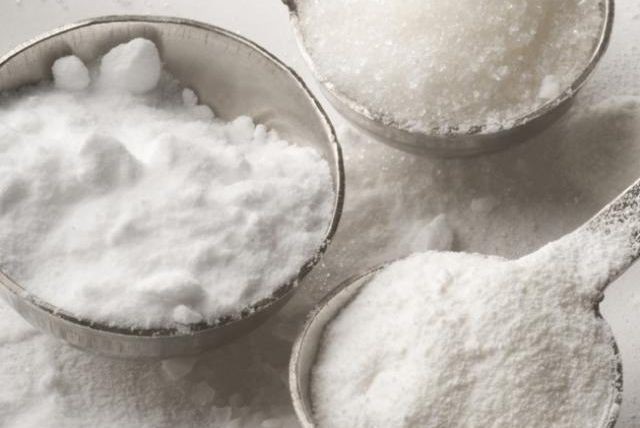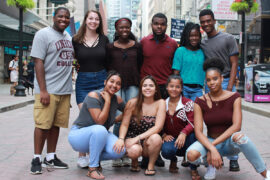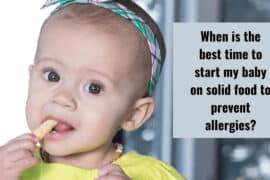Hello, Curious Parents!
Welcome to your ultimate guide on a bubbling question that might have crossed your mind while baking with your kiddos: Is baking soda the same as bicarb soda? You know, that magical powder that makes your cakes rise and your volcano science projects erupt! Well, grab a cup of tea, settle in with your little ones, and let’s embark on a journey of scientific discovery right in your kitchen!
The Great Baking Soda vs. Bicarb Soda Debate
When it comes to whipping up fun and frothy experiments or delicious baked treats, knowing your ingredients is key. I’m here to tell you, dear parents, that baking soda and bicarb soda are in fact, drumroll please… the same thing!
Baking soda is the common name we often hear, especially in American recipes. Meanwhile, bicarb soda, short for bicarbonate of soda, is the term more frequently used in other parts of the world, like the UK and Australia. But don’t let the different names boggle your mind; they refer to the same chemical compound known scientifically as sodium bicarbonate.
This wondrous white powder has an amazing array of uses, from cooking to cleaning and even as a deodorizer. But how do these properties translate to family-friendly activities? Well, buckle up; we’re about to find out!
The Science Behind Sodium Bicarbonate
Before we dive into the exciting experiments you can enjoy with your kids, let’s quickly touch on the science behind this versatile compound. Sodium bicarbonate is a basic salt composed of sodium ions and bicarbonate ions. It’s famous for its ability to act as a leavening agent in baking—which means it causes dough to rise by producing carbon dioxide gas when it reacts with an acid and liquid.
Fun Bicarb Soda Activities for the Whole Family
Learning can—and should—be fun, and there’s no place like the home kitchen for a bit of impromptu science. Here are a few ideas to get you started:
- Homemade Volcano: Mix baking soda with vinegar and food coloring to create an epic, foaming volcano. This teaches kids about acid-base reactions in a vivid, memorable way.
- Baking Bonanza: Bake a simple cake or cookies with your children, highlighting how the dough changes when baking soda is added and heated. They’ll see, first-hand, the leavening process at work!
- Balloon Inflation Challenge: Use the gas produced from the baking soda and vinegar reaction to inflate a balloon. This is a fantastic way to demonstrate gas expansion.
These are just teasers of the exciting activities you can enjoy with your family. Coming up, we’ll explore more about these experiments and delve deeper into each activity!
Creative Cooking and Safety Tip
As we turn our kitchens into laboratories, it’s important to talk about safety. First and foremost, always supervise your children during these activities. Although baking soda is non-toxic, it’s not meant to be eaten in large quantities, and the vinegar used in experiments is acidic, which can be irritating to the skin and eyes.
Now that we’ve got safety covered, let’s discuss how baking soda can also be the secret ingredient in whipping up some unforgettable dishes with your little chefs. Not only does sodium bicarbonate help with leavening, but it can also tenderize meat and even soften beans more rapidly!
Stay Tuned for More Bicarb Magic!
We’re just getting started on our baking soda and bicarb soda adventure. Keep an eye out for more detailed explanations of the chemistry behind these experiments, along with step-by-step guides to entertain and educate your children. Get ready to make some unforgettable memories, one bubbly reaction at a time!

Is Baking Soda and Bicarb Soda the Same? A Parent’s Guide to Kitchen Chemistry
Discover the entertaining world of kitchen chemistry with this comprehensive guide on whether baking soda and bicarb soda are the same. Delight in educational activities that turn your kitchen into a science lab!
Unraveling the Mystery: Are They Identical Twins?
Moms and dads, it’s time to clear up the confusion. Baking soda and bicarb soda are indeed the same wonderfully versatile powder! Whether your recipe calls for baking soda or your British pal mentions bicarb soda, they’re talking about good old sodium bicarbonate.
Five Things Parents Should Know:
1. Same, Same but Different Names
Know that baking soda and bicarb soda are different terms for sodium bicarbonate. No need to search for a substitute or question your recipe!
2. A Pinch of Baking Chemistry
Understand that this kitchen staple is a chemical leavening agent. It reacts with acidic ingredients to produce carbon dioxide, helping baked goodies to rise and creating frothy science experiments.
3. Play it Safe
Always supervise your little ones during kitchen experiments. While baking soda is safe in small quantities, it’s not food in itself, and mixing it with vinegar or other substances should be done with care.
4. It’s All About the Reaction
Embrace the fun in the fizz! Simple household items like vinegar can activate baking soda to demonstrate exciting acid-base reactions perfect for sparking your kids’ interest in science.
5. Not Just for Baking
Spread your culinary wings by using baking soda to tenderize meats, enhance crispiness, or even speed up cooking times for beans.
Join the Bicarb Party with Practical Parenting Tips
– Read up on the science to confidently answer your child’s “whys” and “hows”
– Gather safe tools and ingredients for each experiment
– Embrace the mess – cover surfaces and choose easy-to-clean areas
– Talk about expectations and what might happen before you start
– Document your experiments with photos or a journal for lasting memories
Incorporate Learning into Everyday Life
Transform baking sessions into science lessons by experimenting with recipes and tweaking baking soda amounts. Observe what happens and ask your kiddos to make their own hypotheses!
The Ultimate Baking Soda Experiments:
– Build your own kitchen volcano and experience a classic chemical reaction
– Witness the magic of leavening by baking a simple loaf of bread
– Inflate a balloon without huffing and puffing by using gas from a baking soda and vinegar reaction
– Create fizzy bath bombs as a fun twist on chemistry and self-care
– Investigate cleaning properties by using baking soda on stained teacups or grimy surfaces
More Than Just Fun: The Educational Benefits
Engaging with your children in these activities boosts their observational skills, hones their scientific thinking, and encourages a love for learning that extends well beyond the confines of a classroom.
The Creative Culinary Adventures Continue…
Don’t stop at experiments, though. Baking soda is a culinary multitasker! Create fluffier pancakes, crispier fried foods, and even play with the browning aspect in cookies and bread.
Closing Remarks (Not a Signoff)
Lovely parents, baking soda, or bicarb soda, is a small ingredient with big potential. Whether for education, cleaning, or cooking, it’s a staple every kitchen-science-loving family should be well-acquainted with. Keep exploring, keep questioning, and most importantly, keep having fun with your mini scientists. Your next adventure waits just beyond the pantry door.
For more great articles please see here. For more information see here
Disclaimer
The articles available via our website provide general information only and we strongly urge readers to exercise caution and conduct their own thorough research and fact-checking. The information presented should not be taken as absolute truth, and, to the maximum extent permitted by law, we will not be held liable for any inaccuracies or errors in the content. It is essential for individuals to independently verify and validate the information before making any decisions or taking any actions based on the articles.




